People often think of a library as a large, quiet room filled with books, but for preschoolers, it opens the door to imagination, discovery, and early learning. If you don’t have a dedicated room for a library, don’t worry! With a little creativity and the right preschool library ideas, you can transform even a small open area into a vibrant, child-friendly library space.
Recently, I created a preschool library in an open area, rather than in a dedicated room. I divided the space into different reading nooks—each with its own purpose and focus. Use creativity, simple materials, and thoughtful planning to transform any open space into a magical children’s library. In this blog, I will share how you can create a magical reading environment for young learners.
Preschool Library Tour – All Sides View
See My Work in Action
Take a closer look at my colorful preschool library ideas setup by watching this video:
- Rainbow-Themed Wall Mural & Handmade Decor
- Creative Reading Corners – Sight, Flash Cards & Picture Reading
- Book Nook, Active Reading Zone & Face Reading Fun
- Painted Wall Stairs with Step-by-Step Reading Guidance
Step into a world of imagination, stories, and creativity as this open-area preschool library comes to life—crafted with love, colors, and a passion for inspiring young readers!
Watch the creativity unfold and get inspired to create your own magical library space.
Why Every Preschool Needs a Library
Early Literacy Skills
Preschool is the stage where children begin to recognize letters, sounds, and words. A library allows them to explore these skills naturally.
Developing a Love for Reading
Books are introduced as fun and interactive, and children grow up to see reading not as a chore but as a joy.
Stimulating Imagination
Books spark creativity. The space of a library allows children to immerse themselves in imaginative worlds, explore new ideas, and learn about different cultures.
Building Focus and Patience
Short reading sessions also teach children patience, attention, and listening skills.
Encouraging Group Learning
With specific activity corners, children learn to share stories, interact, and communicate with their peers.
Creating a Library Without a Room
Not everyone has the luxury of dedicating an entire room to a preschool library. That’s okay! The key is to make small areas purposeful. I transformed a simple open space into a living library by dividing it into different reading and activity areas. Each area focuses on a specific type of reading and engagement.
Here’s how I created it:
Different Areas in the Library
Sight Reading Corner
- This area is dedicated to large, colorful word cards and simple sentences.
- Words are displayed at eye level, allowing children to easily recognize them.
- Fun activities like “Spot the Word” make learning interactive.
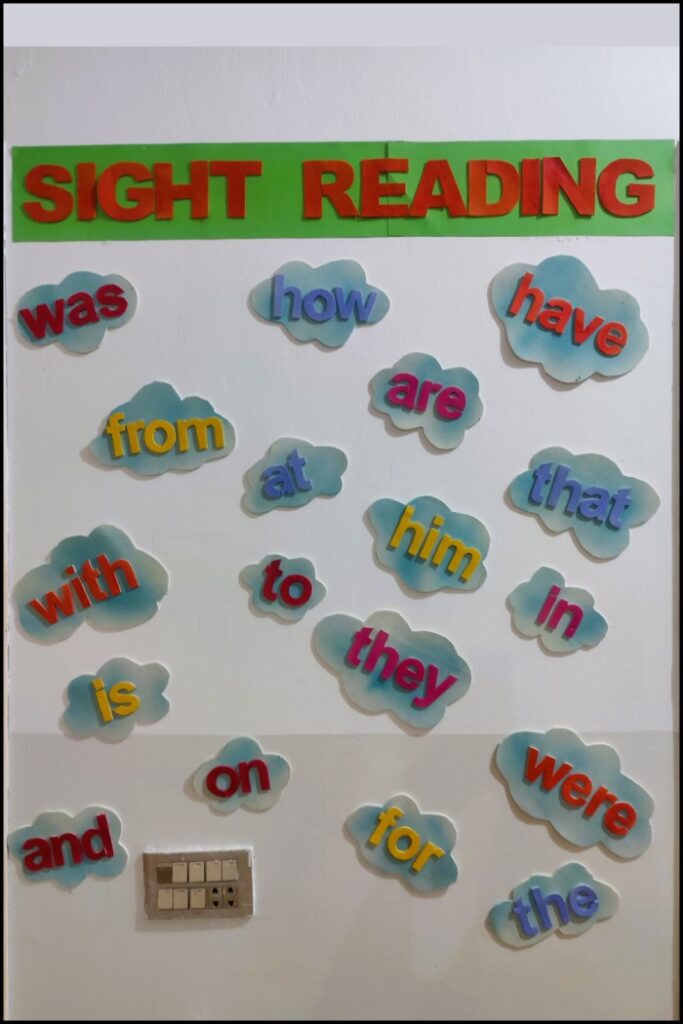
Active Reading Area
- Designed for storytelling sessions with actions, vocal modulation, and role play.
- Children actively participate by repeating lines, making sounds, or acting out characters.
- This area builds confidence and listening comprehension.
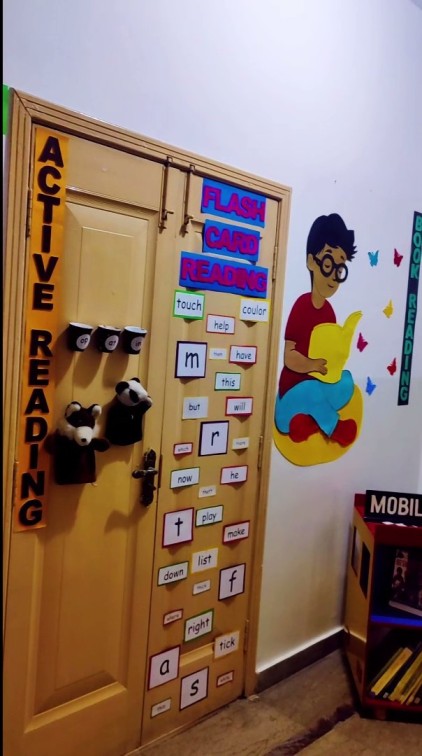
Flash Card Reading Zone
- Flashcards with letters, words, and pictures encourage quick recognition.
- Perfect for phonics practice and memory-building games.
- Children enjoy the speed and excitement of learning this way.
Book Reading Nook
- A cozy section with colorful floor mats, cushions, and baskets of storybooks.
- Books are displayed with covers facing outwards to attract children.
- Here, children can sit quietly, flip through pages, and develop independent reading habits.
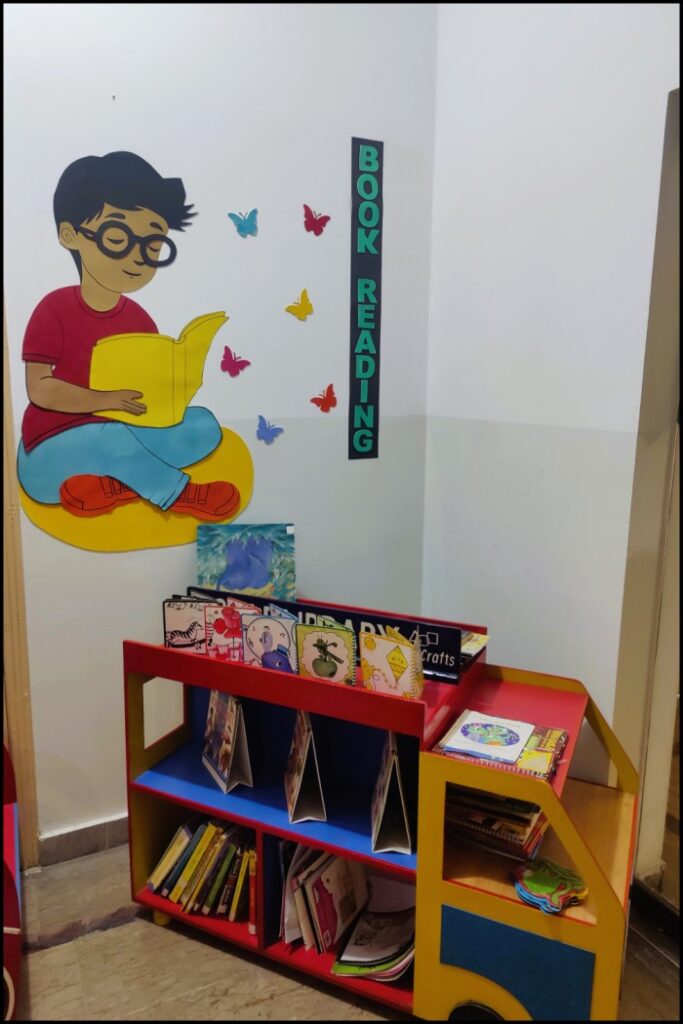
My Environment Section
- This corner features books related to nature, community helpers, and the surrounding environment.
- Children learn about their world through pictures and stories.
- Activities like “find your favorite place in the picture” make it interactive.
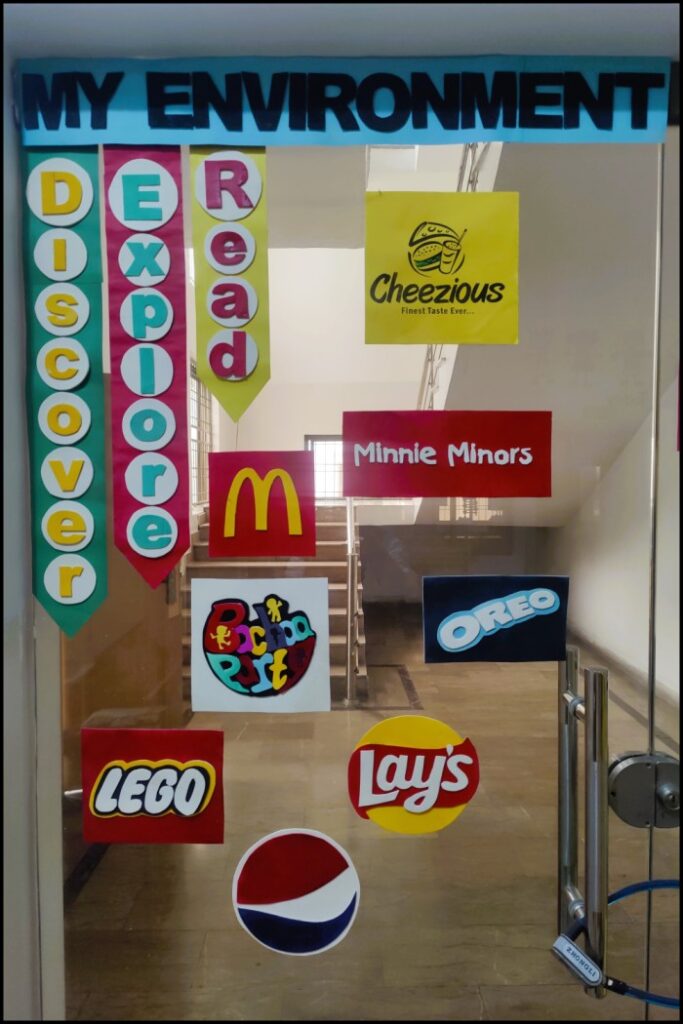
Picture Reading Wall
- One wall is filled with large, bright pictures and posters of true stories.
- Children look at the pictures and describe what they see — building vocabulary and imagination.
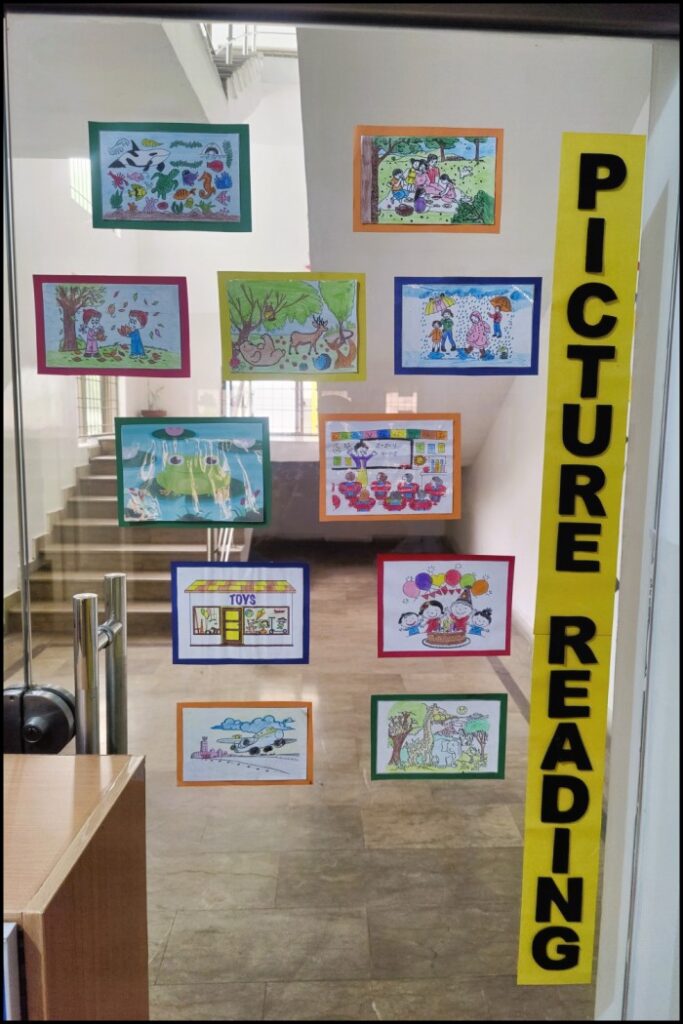
Face Reading Fun
- A unique corner where children explore expressions through drawing, flashcards, or mirrors.
- Helps with emotional development and social understanding.
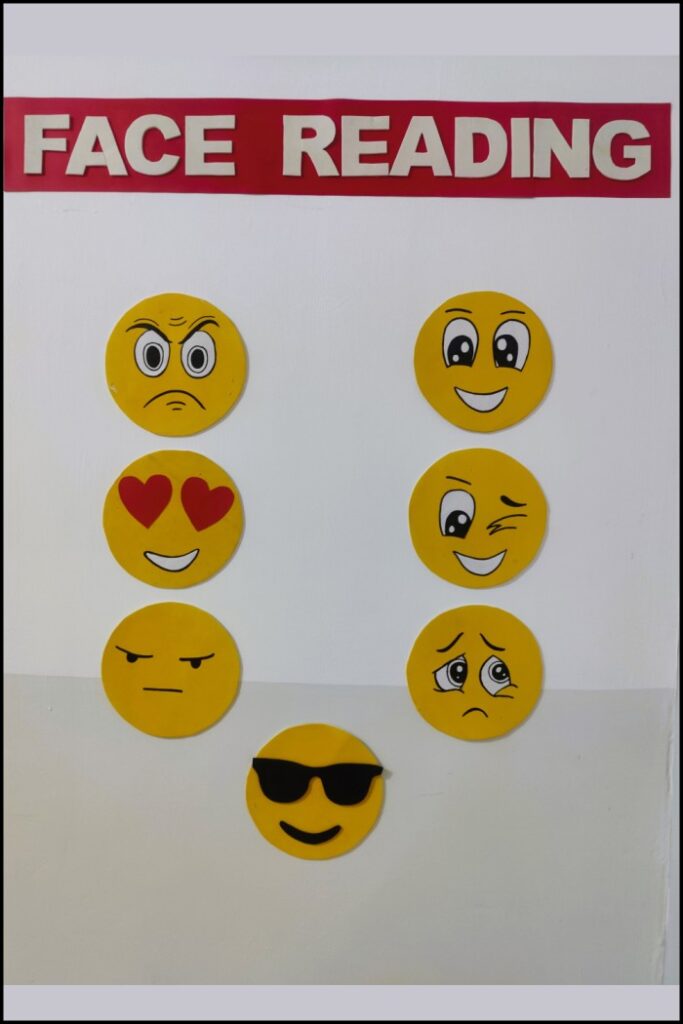
Arranging Mural Pieces Before Wall Display
- Before creating the wall display, I arranged the wall cuttings on the floor using foam and rubber sheets.
- This step helped me plan out the shapes, colors, and designs before sticking them to the wall.
- The kids also enjoyed watching the process — it felt like they were putting together a giant puzzle on the floor.
- Once set, the wall was moved, making the display much cleaner and more creative.
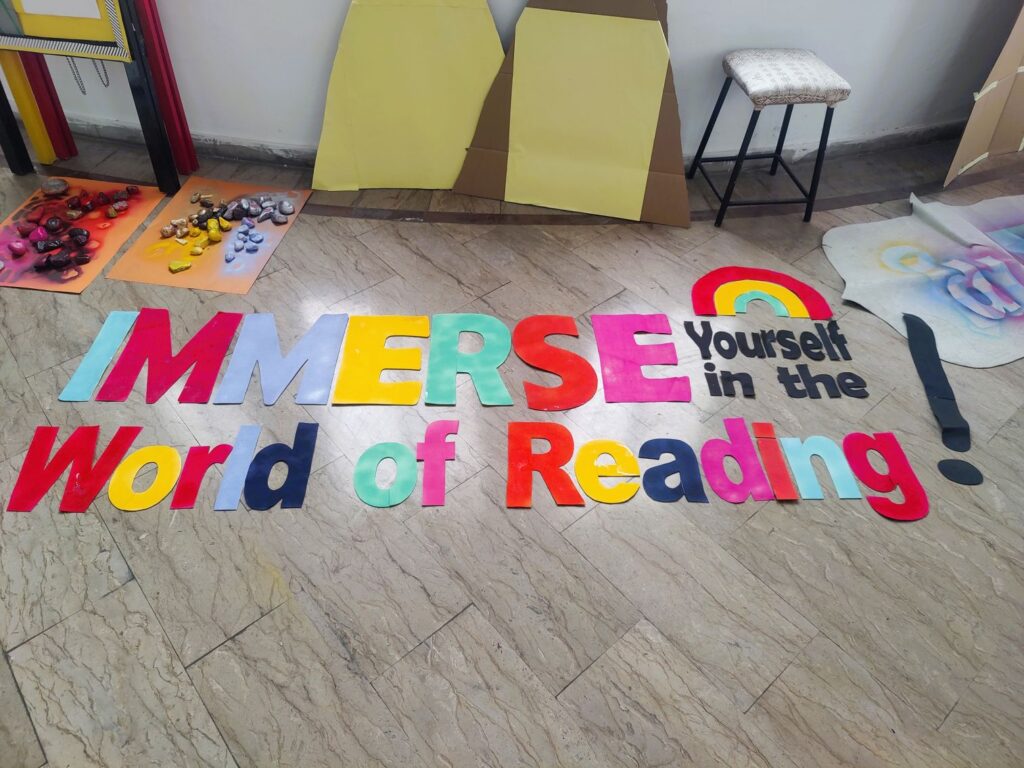
Immerse Yourself in Reading Wall
- A handmade wall made with rubber/foaming sheets and colored spray paint.
- A small rainbow painted on top adds to the joy and excitement.
- Every time they see it, children feel like they are entering a world of stories.
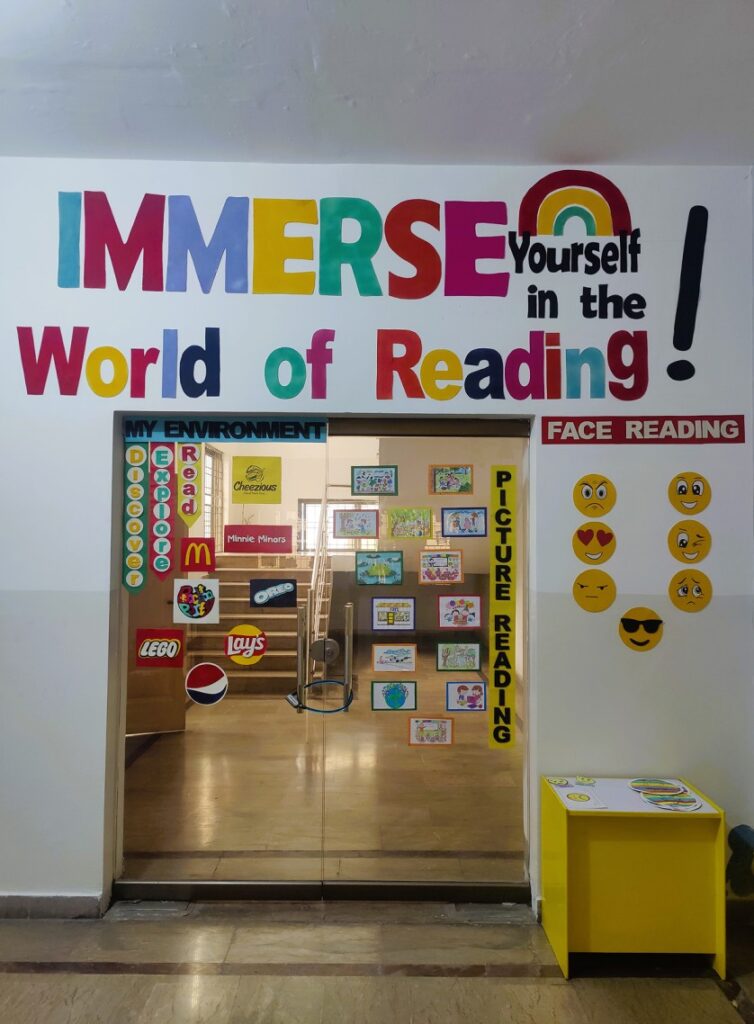
Creative Additions
Rainbow Touch
- A small rainbow on the wall adds a magical touch.
- Children immediately associate it with joy and fun.
Wall Stairs with Painted Guidance
- On one wall, I painted “stairs” with an important heading at each step.
- These serve as a guide for children – a step-by-step guide on the reading journey.
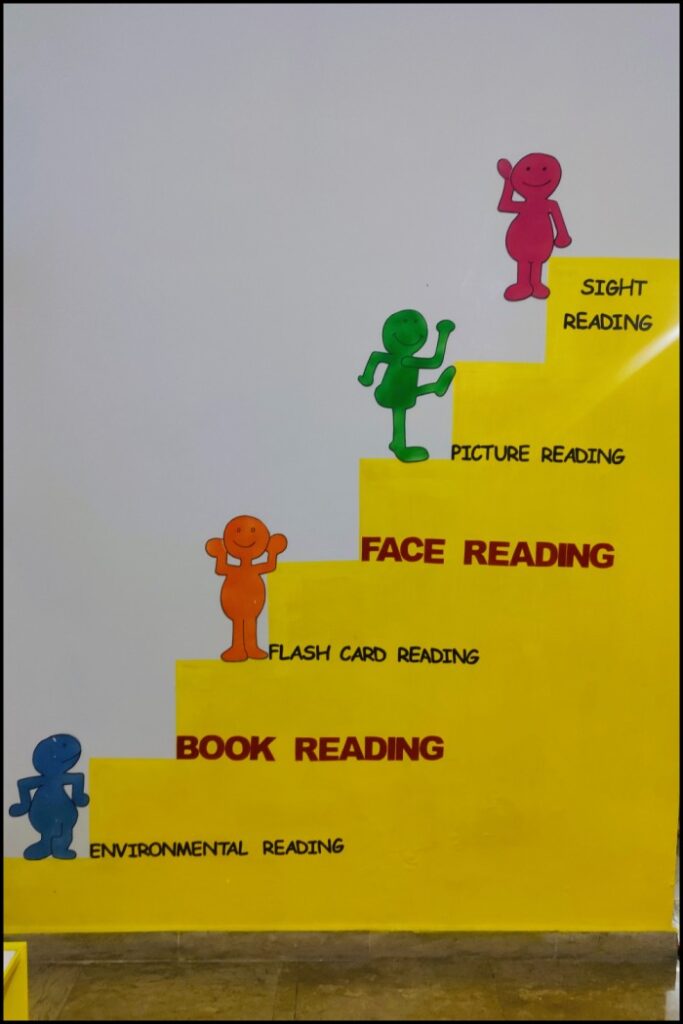
Handmade Decor
- Rubber and foam sheets were cut and sprayed with bright colors.
- Each wall element was designed to make reading an interactive and enjoyable experience.
Benefits of an Open-Area Library
- Accessibility – Closed walls mean children can enter freely.
- Flexibility – Easily rearrange or expand as needed.
- Engagement – Open areas feel less formal, encouraging children to interact.
- Creativity – Teachers can design different reading zones without restrictions.
How to Set Up Your Own Preschool Library (Step by Step)
- Choose a small space – even a corner of the hall, veranda, or playground can be transformed.
- Divide into zones – each zone should focus on a specific type of reading.
- Use less furniture – shelves and baskets should be at child height for easy access.
- Add colorful decorations – murals, foam sheets, and painted stairs make the space inviting.
- Provide a variety of books – picture books, storybooks, and flashcards to keep children engaged.
- Encourage interaction – plan storytelling, group reading, and role-play sessions.
- Rotate content – change books and flashcards regularly to maintain interest.
Related Blog Posts You Might Like
Conclusion
You don’t need a fancy room or a big budget to give preschoolers the gift of reading. Use creativity, simple materials, and thoughtful planning to transform any open space into a magical children’s library. Exploring different preschool library ideas makes it easier to design corners that truly inspire young readers.
My open-area preschool library—with its visual reading corner, flashcard wall, immersive wall, and rainbow touch—has already begun to inspire little learners. Every day, I see children running around to find books, laughing at the pictures, and acting out stories.
If you are a teacher, parent, or school leader, I encourage you to try creating your own space using preschool library ideas. Let’s give our children the joy of reading, one colorful corner at a time.


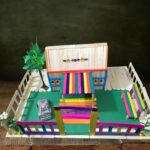

Pingback: Doctor Clinic Dramatic Play Idea for Preschool - 1thousandideas